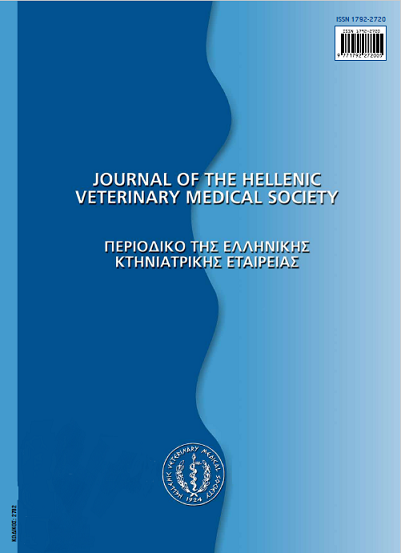Prevalence of Linguatula serrata infection in domestic ruminants from Meshkin Shahr, Iran

Abstract
Linguatula serrata is an aberrant cosmopolitan parasite, which inhabits the canine respiratory system (final host). The domestic ruminants such as sheep, goats, cattle and buffaloes (intermediate hosts) play the important role for transmission of parasite to humans and animals. The current investigation aimed to investigate the prevalence of L. serrata infection in domestic ruminants in Meshkin Shahr, Northwest of Iran. In cross-sectional study between March 2013 and March 2014, the mesenteric lymph nodes (MLNs) of 753 sheep, 403 goats, 657 cattle, and 341 buffaloes were sampled in Meshkin Shahr slaughterhouse, randomly. All of samples were examined for L. serrata infection using parasitology methods. The prevalence rate was reported 26.30% in goats, 18.32% in sheep, 14.30% in cattle, and 13.19% in buffaloes (P<0.05). In all animals, a significant difference were found between infection rate and different seasons (P<0.05), opposite to different age groups. Also, there was significant differences between infection rate and gender in cattle (P=0.024, OR=1.6) and buffaloes (P=0.034, OR=2), unlike to sheep and goats (P>0.05). This study was demonstrated of linguatulosis in domestic ruminants from Northwest of Iran for first time. According to our findings, Meshkin Shahr is a new endemic region for L. serrata infection in Iran. Since the linguatulosis is a zoonotic parasitic disease, preventive measures to break the parasite’s life cycle and reduce the risk of infection in humans and animals is highly recommended.
Article Details
- How to Cite
-
ESMAEILNEJAD Β., GHAREKHANI, J., REZAEI, H., GOLABI, M., & MOLAYI, N. (2018). Prevalence of Linguatula serrata infection in domestic ruminants from Meshkin Shahr, Iran. Journal of the Hellenic Veterinary Medical Society, 68(2), 175–180. https://doi.org/10.12681/jhvms.15602
- Issue
- Vol. 68 No. 2 (2017)
- Section
- Research Articles

This work is licensed under a Creative Commons Attribution-NonCommercial 4.0 International License.
Authors who publish with this journal agree to the following terms:
· Authors retain copyright and grant the journal right of first publication with the work simultaneously licensed under a Creative Commons Attribution Non-Commercial License that allows others to share the work with an acknowledgement of the work's authorship and initial publication in this journal.
· Authors are able to enter into separate, additional contractual arrangements for the non-exclusive distribution of the journal's published version of the work (e.g. post it to an institutional repository or publish it in a book), with an acknowledgement of its initial publication in this journal.
· Authors are permitted and encouraged to post their work online (preferably in institutional repositories or on their website) prior to and during the submission process, as it can lead to productive exchanges, as well as earlier and greater citation of published work.


